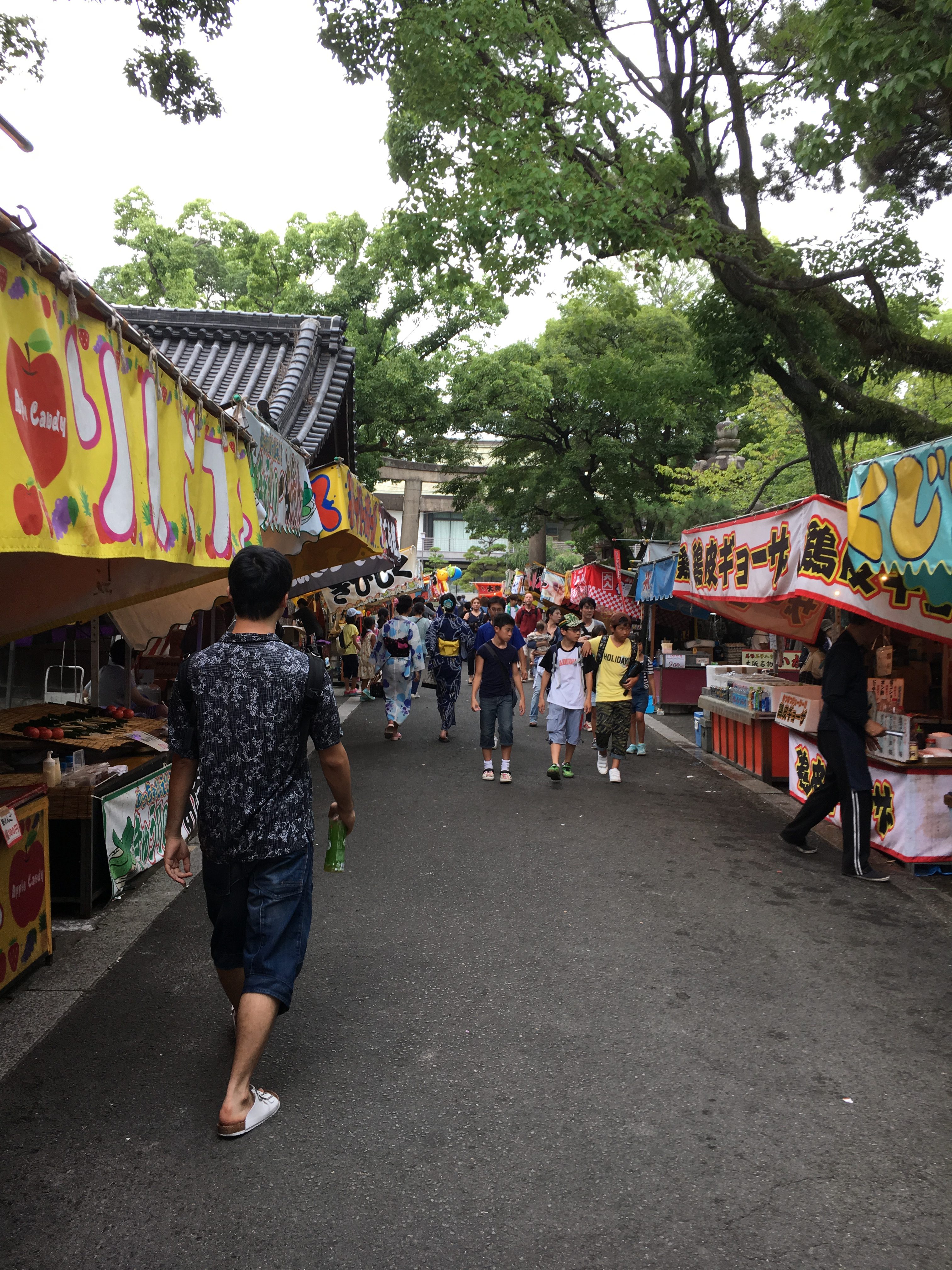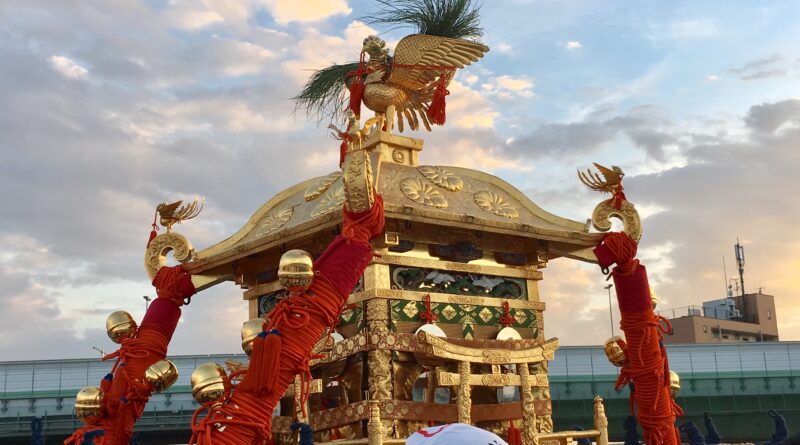Osaka’s Amazing Sumiyoshi Matsuri
Osaka’s three big summer festivals are Aizen Matsuri, Tenjin Matsuri and Sumiyoshi Matsuri. Beginning with Aizen Matsuri and reaching a climax during Tenjin Matsuri, everything rounds out with Sumiyoshi Matsuri, which takes place in Sumiyoshi Taisha. This ancient festival has been part of Osaka for centuries and celebrates some of Osaka’s most popular deities.

About Sumiyoshi Matsuri
Though the history of Sumiyoshi Taisha dates back to the 3rd century, it is not entirely clear exactly when Sumiyoshi Matsuri started. One record mentions that Sumiyoshi Matsuri was already a tradition by the 8th century, so it is safe to assume it is pretty old.
https://kansai-odyssey.com/sumiyoshi-taisha-part-1/
Because the Sumiyoshi gods were born when Izanagi purified himself after he returned from Yomi, they are not only considered gods of the ocean, but gods of purification as well. For this reason, Sumiyoshi Matsuri’s prime function is to be a purification festival.
The festival is July 31st -Aug 1st. There are many vendors all over the shrine as well as many people— though they are mostly kids since it’s the middle of the summer break!

The main events of Sumiyoshi Taisha are Nagoshi no Harae on the July 31st and the Mikoshi Togoyo on Aug 1st.
Nagoshi no Harae

Nagoshi no Harae [夏越の祓], is a ceremony where people visit a shrine hoping to receive good health for the rest of the year. One of the most prominent parts of a Nagoshi no Harae is the presence of large straw rings. Visitors walk through the ring to remove bad spirits and misfortune. So, make sure to go through this ring when you go to the festival!

An important part of Nagoshi no Harae, is a large purification ritual. The ritual is usually around 5:00 and starts near the Satsuki-den, which is close to Sumiyoshi’s rice field. After the ceremony concludes at Satsuki-den, the procession consisting of shrine maidens, dancers, chigo, and nagoshime head to the first hongu at the back of the shrine. From what we can tell, chigo and nagoshime are groups of young girls dressed like aristocratic children from the Muromachi Period. Their function seems to he purely ornamental, but it is very interesting to see this kind of traditional dress all the same.


Sumiyoshi Odori
The shrine maidens then perform Kuma no Mai, a kind of kagura, to purify the area. Once the shrine maidens are done a group of young girls will perform the very traditional Sumiyoshi Odori (Sumiyoshi Dance). The Sumiyoshi Odori has been apart of numerous festivals and special events at Sumiyoshi Taisha for hundreds of years! Since Nagoshi no Harae fell on a weekday this year (2017), there were significantly less people when we went there.
Mikoshi Togyo
The last day (Aug 1st) of Sumiyoshi Matsuri is the mikoshi togyo [神輿渡御]. Literally meaning “mikoshi walking”, a mikoshi togyo is when a mikoshi is paraded through the streets from point A to point B. In this case, the mikoshi go all the way from Sumiyoshi Taisha to Shukuin Shrine in Sakai.
Sumiyoshi Matsuri features some particularly large and elaborate mikoshi as well. Specifically, the largest mikoshi, dai mikoshi, is from 1881 and weighs 2.6 tons! Dai mikoshi was not in use for about 75 years because it was old and in need of repair. It was not until 2016 when the mikoshi was finally fixed!

To get the out of the inner shrine, the participants must carry the dai mokoshi over Soribashi. This looks like an extremely stressful and dangerous process, since the steps of the bridge are so small, and the mikoshi is so heavy!

As you might imagine, there is a huge parade for the mikoshi as they make their way to Sakai City.
The mikoshi togyo is a historic part of Sumiyoshi Matsuri, but it was suspended around WWII. The traditional mikoshi togyo did not take place again until 2005. Today, the mikoshi togyo is a lively parade that proudly shows off its historic roots.





Transporting the Mikoshi
One of the most important aspects of the parade is when the mikoshi finally are able to cross the Yamatogawa River.

Typically, the mikoshi is carried in to the river and then handed off to the participants from Shukuin Shrine. Sadly, some years like 2017, the river is too high and the mikoshi must cross the river via a little bridge and then passed on to the Shukuin group.

While carrying the mikoshi everyone yells “Beera, beera!” which is a mispronunciation of “heiraku jya!” a phrase that gives praise and thanks to the Sumiyoshi gods.
Regardless, groups of drummers on both sides of the river celebrate the passing of the mikoshi, and because Sakai was once famous for their guns, they shot off a round of blanks from of old muskets. A big deal for a country where gun ownership/crime is basically non-existent!

Once the trade off is complete the mikoshi can safely continue their journey to Shukuin Shrine, successfully concluding another Sumiyoshi Matsuri.

Coming next time,
Don’t hang up your party hats yet. It’s time for Sakai’s Big Fish Festival!
The adventure continues…


Leave a Reply